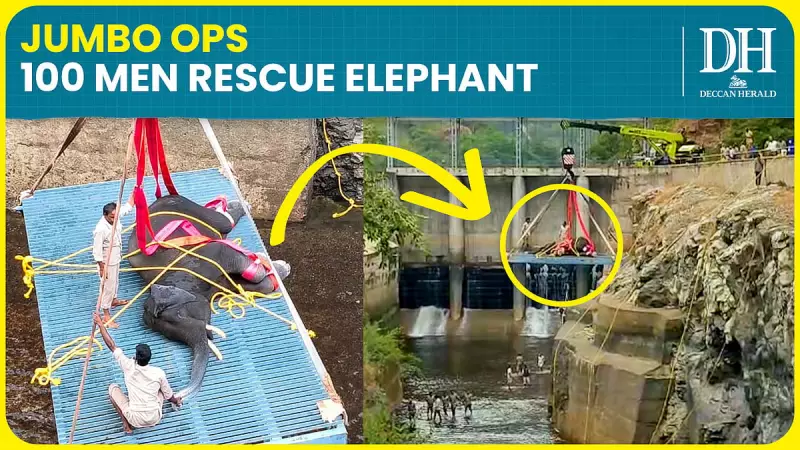
In a remarkable display of human-wildlife cooperation, a massive rescue team successfully saved a wild elephant that had become trapped in a deep irrigation canal in Karnataka's Hassan district. The dramatic operation unfolded over nearly 12 hours and involved over 100 personnel from multiple agencies working against time to free the distressed animal.
The Dramatic Discovery and Initial Response
The incident began when local farmers in Hulikere village, Sakleshpur taluk made a startling discovery on Tuesday morning. A fully-grown wild elephant had fallen into the 60-foot deep Hunasagodu canal, part of the Yettinahole project, and was unable to climb out due to the steep, concrete walls.
Forest department officials were immediately alerted to the emergency situation. Deputy Range Forest Officer Manjunath quickly assembled an initial response team upon receiving the distress call. The elephant, estimated to be around 25-30 years old, was visibly distressed and struggling in the water-filled canal.
Massive Rescue Operation Mobilizes
What began as a local rescue effort soon escalated into a major operation involving multiple agencies. The Karnataka Forest Department mobilized its full resources, joined by personnel from Fire and Emergency Services and local police departments.
According to officials, the rescue team grew to include approximately 100 members, all working in coordinated shifts to ensure the elephant's safety. The operation presented numerous challenges, primarily the canal's steep 60-foot depth and concrete construction that made escape impossible for the trapped animal.
Rescuers employed multiple strategies to assist the elephant. They used earthmovers and other heavy machinery to create a sloped exit path from one side of the canal. Simultaneously, they carefully monitored the animal's condition, ensuring it remained calm throughout the stressful ordeal.
Successful Conclusion After 12-Hour Ordeal
After nearly 12 hours of continuous effort, the rescue operation reached its triumphant conclusion. The elephant, showing remarkable intelligence and cooperation, eventually used the created slope to walk out of the canal on its own power.
Forest officials confirmed that the animal appeared to be in good health despite the traumatic experience. Once free, the elephant quickly disappeared into the nearby forest, returning to its natural habitat without further incident.
This successful rescue highlights the ongoing challenges of human-wildlife conflict in regions where animal habitats border human settlements. The Hunasagodu canal, part of a major irrigation project, has become a potential hazard for wildlife moving through the area.
Forest department officials have indicated they will review the incident to prevent similar occurrences in the future. Possible measures include installing warning systems or creating alternative pathways for wildlife to safely navigate around such infrastructure projects.
The collaborative effort demonstrates how coordinated action between government agencies and local communities can effectively address wildlife emergencies while ensuring both human and animal safety.





